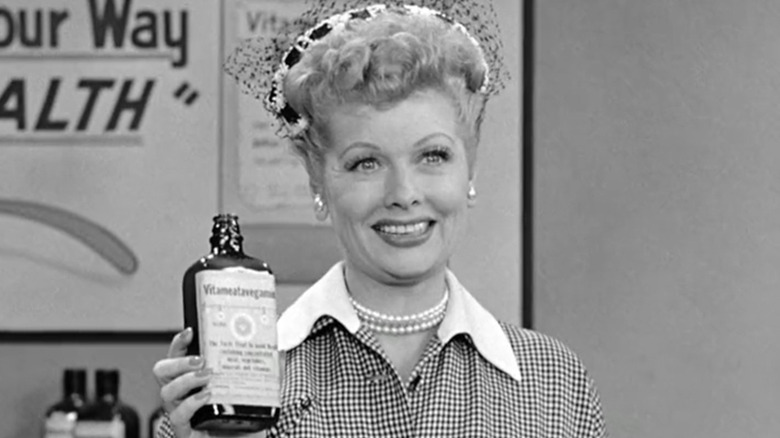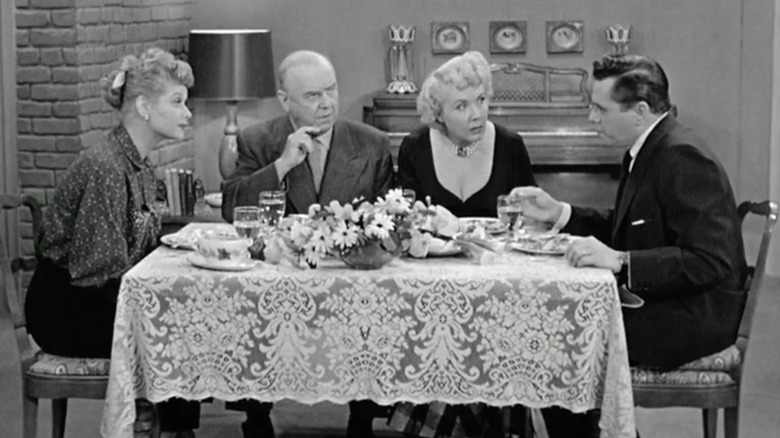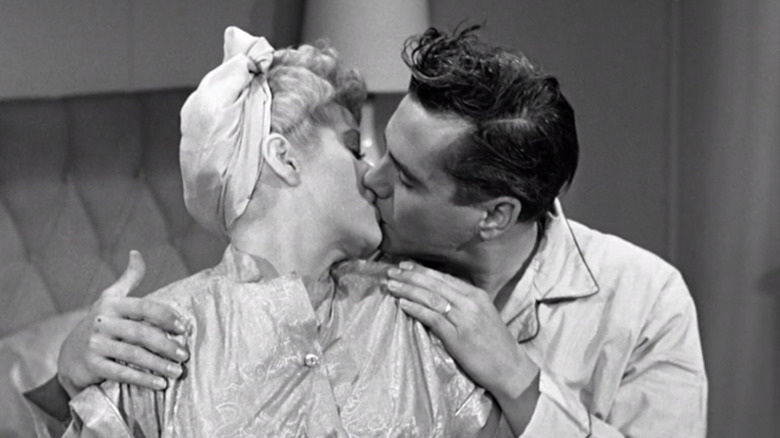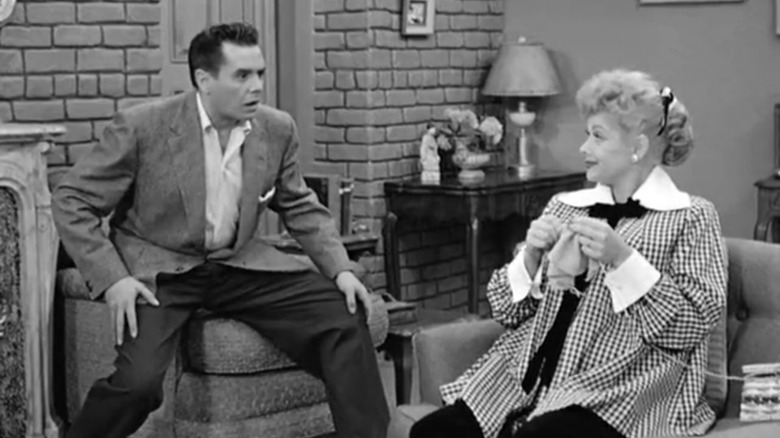I Love Lucy Changed Television History In Ways That Should Never Be Forgotten
I think modern television gets a little too much credit for being revolutionary. Yes, there have been big strides in what kind of stories get told on TV, especially in regards to the structural and thematic experiments many programs take on, but I do feel like there is this strange mindset that TV wasn't all that innovative prior to "The Sopranos" premiering in 1999. Part of this has to do with the many people's either inability or refusal to appreciate art made before a certain time period. When it comes to film, that cutoff point is in the 1970s, where "real movies" began with the likes of "The Godfather," "Jaws," and "Star Wars," and anything older than that is stale, crusty, and homework. Because television is a newer medium, that cutoff point is somewhere in the 1990s, which also just so happens to be the time period where a majority of the people currently writing about this topic came of age with TV.
Of course, this mindset is pretty nonsensical. Ever since the beginning of these art forms, innovation has been constant, and they were doing just as much experimentation in the first 20 years of their existence as the last 20 years. Something that seems overly familiar now was at one point a trailblazer, and few pieces of popular entertainment fit that description better than "I Love Lucy." We know the show starring Lucille Ball and Desi Arnaz to be a classic filled with gags still referenced today, but that show was more than just a gag factory. "I Love Lucy" was pushing boundaries in both content and form that left an indelible imprint on the television form itself, which we all take for granted today.
The multi-cam sitcom
"I Love Lucy" — and Desi Arnaz in particular — is often credited with the invention of the multi-camera shooting style in front of a live audience that the vast majority of sitcoms have adopted until the last few years. This isn't entirely true. According to a piece written by the LA Times back in 1991, this system of shooting was created by Al Simon and Karl Freund, who first used three cameras to shoot the game show "Truth or Consequences" in front of a live audience. And even before that, Jerry Fairbanks utilized three cameras for the show "Public Prosecutor" back in 1947, though that was done without an audience.
Simon and Freund were recruited to work on "I Love Lucy," and they brought their three-camera system along with them. Being that "Truth of Consequences" was a game show, "I Love Lucy" can take the credit for being the first multi-cam sitcom with a live audience. Thanks to that show's popularity and quality, that multi-cam system was no longer a test to see if it worked for the situation comedy. It became a defining characteristic for the form forever, one that creators now choose to embrace or turn away from.
To us in the present, the multi-cam sitcom is old hat. Whether we're watching "The Mary Tyler Moore Show," "Seinfeld," "The Jeffersons," or "Frasier," the form is second nature, and because of that second nature, we have seen an explosion of single-camera sitcoms in the last decade or so. At a certain point, I know that pendulum is going to swing back the other way, and more people are going to try and recapture what makes the multi-cam such a terrific style for the sitcom. And we have "I Love Lucy" to thank for that.
An on-screen interracial marriage
We need to remember that "I Love Lucy" premiered in 1951. This was a show about a marriage between a white woman in Lucille Ball and a Cuban-American man in Desi Arnaz. Even though "I Love Lucy" was the number one show in the country, beloved by countless millions, this was still a time in the United States where anti-miscegenation laws were in place in over half the states in the country. California, where the show was filmed, had only repealed their anti-miscegenation law in 1948 after the Perez v. Sharp case reached the California Supreme Court. That's just three years before this show goes on the air. It wouldn't be until the Loving v. Virginia case in 1967 until the United States Supreme Court deemed all anti-miscegenation laws unconstitutional.
Yes, Arnaz was a pretty light-skinned man, especially in black-and-white with TV makeup on, but he was unmistakably a Cuban man who never let you forget where he came from. Not only were they a married couple on TV and in real life, but they broke even further ground by having a pregnancy storyline for Lucy. So, these two people from different backgrounds weren't just married. They had sex. With each other. Though slightly better today, interracial relationships on-screen are still a fairly rare occurrence, especially ones that last for a long period of time. Ball and Arnaz's marriage may not have lasted in real life, but that doesn't mean their union wasn't a landmark relationship in the history of television.
A true phenomenon
It's safe to say that the series finale of "Succession" is the biggest thing to happen on television in 2023. The series had a wildly devoted fanbase, and at a time when streaming has completely upended when people watch shows, "Succession" was one of the few where you had to watch it as soon as it aired. Do you want to know how many people watched it that night? 2.9 million, which was the highest of the whole series.
The most watched episode of "I Love Lucy" was "Lucy Goes to the Hospital," in which she gives birth. It comes in the middle of season 2. Want to know how many people watched that episode? 44 million. Over 70% of the people in the United States who owned a television tuned into that episode. No Super Bowl in history has even crossed 50%. The day before "Lucy Goes to the Hospital" aired, President Dwight D. Eisenhower was inaugurated. This was someone who won 39 of the then 48 states in the country. He could only get 29 million to watch his inauguration. The second season of "I Love Lucy" as a whole was the number one show in the country with a whopping 67.3 rating. No other TV season in history has cracked even a 60 rating since.
Something that reaches that level of cultural saturation will inevitably become second nature. Most people alive today don't remember a time when "I Love Lucy" wasn't around. It has become TV wallpaper with countless imitators in the 72 years since its creation. But when it hit the air, "I Love Lucy" was a lightning bolt that was innovative and influential as it was popular. Rarely do those two things collide in such spectacular fashion. Also ... it's still hilarious.



